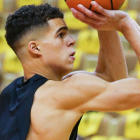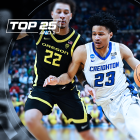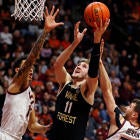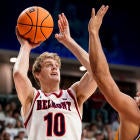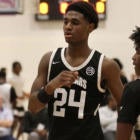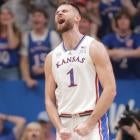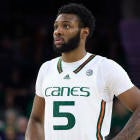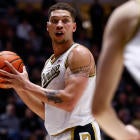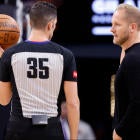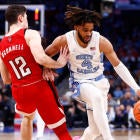In the aftermath of Tuesday's gut-wrenching news that Missouri freshman Michael Porter Jr., a potential No. 1 overall pick in the 2018 NBA Draft, was likely lost for the season after undergoing a scary-sounding back surgery, I reached out to a bunch of scouts to ask the callous but relevant question:
What does this mean for the remarkably skilled Porter's NBA future, specifically his placement in the 2018 draft?
One scout replied ominously: "The doctors are in charge now."
Next year's NBA Draft was never going to be as deep as the 2017 draft, and it doesn't have that draft's bevy of point guard prospects, but it does have two tantalizing characteristics:
One is that the upcoming draft has a boatload of talented big men: A few who are potentially transcendent NBA players -- Duke's Marvin Bagley III, Arizona's DeAndre Ayton and Texas' Mo Bamba; a few who ought to be for-sure NBA starters -- Michigan State's Jaren Jackson Jr., Texas A&M's Robert Williams III; and a bunch of risky but exciting wild cards -- USC's Chimezie Metu, NC State's Omer Yurtseven, Auburn's Austin Wiley, Baylor's Jo Lual-Acuil, even former Western Kentucky commit Mitchell Robinson.
The other salient characteristic -- and the one that has so many scouts excited about this draft -- is that the highest echelon of this draft is loaded with five or six can't-miss prospects.
What we learned Tuesday with the news of Porter's surgery -- a "microdiscectomy of his L3-L4 spinal discs," which removes herniated disc material pressing on the spinal cord or a nerve root, and which will likely keep Porter from playing another minute of college basketball -- is a reminder of something we have always known but often choose to ignore: Nothing is guaranteed in sports. Nothing.
There had been a top tier of five, perhaps six prospects who seemed guaranteed to go at the top of this draft. Porter, Bagley, Ayton and hyper-skilled Slovenian wing Luka Doncic seemed the four most likely to go No. 1, but joining them in that top tier were Bamba and Jackson. Every single one in the first four of this group would have had a great shot at going No. 1 in last year's draft; Bamba and Jackson may have, too.
And while I doubt that Porter's surgery drops him any further than the mid-lottery, the fact is a higher element of risk was introduced into his budding basketball career the moment he went under the knife.
Love Porter's game, like I do? Think he's just like the Boston Celtics' Jayson Tatum, only a little bit taller and a little bit stronger, with a little bit better touch and a little bit higher ceiling? Thought he had slightly edged out the others in this stacked top tier for the No. 1 overall pick?
Well, it's time to rethink all of that. Because while it's certainly true that he could end up as the best player in the 2018 draft (and as much as this Mizzou grad would love to see him come back to school and wait until the 2019 draft, come on, there's just no way), there is an element of risk that has been introduced to Porter's career that was not around a month ago. And that alone will likely take him out of the running for the top spot, which ought to go to the player who feels like the guarantee.
In that way, it's not unlike the 2014 NBA Draft. The main reason Joel Embiid was not selected No. 1 was because of the risk that was introduced by health concerns, namely, a stress fracture in his back that ended his college career and a broken bone in his right foot that sent him into surgery six days before the draft.
While it seems pretty clear that Embiid is the better NBA player than the two players selected in front of him -- Andrew Wiggins and Jabari Parker -- it is far from clear that he'll have the better NBA career than the durable Wiggins. Risk was baked into the Embiid pick, and that risk continues to haunt Embiid and the Sixers as they are still ultra-careful with him after he missed all of his first two seasons and most of his third.
Risk is now baked into whichever team selects Porter. Scouts who I contacted did not believe Porter's injury was a death knell to his draft status like, say, Duke's Harry Giles last year, who fell all the way to 20th after two torn ACLs in high school and one uninspiring, injury-riddled college season. But they also did not see this as a Kyrie Irving situation. Irving played all of eight games in college before having a foot injury in his ninth game. Irving was still selected first overall, but the picks that followed were not nearly as scintillating as the top tier this season. After Irving came Arizona sophomore Derrick Williams, Kentucky freshman Enes Kanter, Texas freshman Tristan Thompson and then three international players: Jonas Valanciunas, Jan Vesely and Bismack Biyombo.
The consensus among scouts I talked with is that Porter ought not fall past sixth. If I had to forge a guess today, it would be that the draft order would go like this: Bagley, Doncic, Ayton, Porter, Bamba, Jackson. That's assuming Porter's medicals check out -- and just like Embiid in 2014, Porter now will have the most scrutinized and most important medical evaluations and pre-draft workouts of any player in the 2018 draft.
It's not like scouts haven't seen Porter play. He has been on the map for years as a potential No. 1 pick, someone who won the MVP award at the 2017 McDonald's All-American game and all sorts of national player of the year awards in high school. There's plenty of tape on what he can do. There's just now been injected a hint of doubt into whether he can actually do it.
Still, it's a shame, really: For Mizzou fans who salivated at the possibility of Porter resurrecting their program. For college basketball fans who love the chance to see a future NBA star play in the charged college atmosphere. And, most of all, for Porter and his family, who have learned a harsh life lesson at his too-young age of 19: That even the surest of things are never guaranteed.













